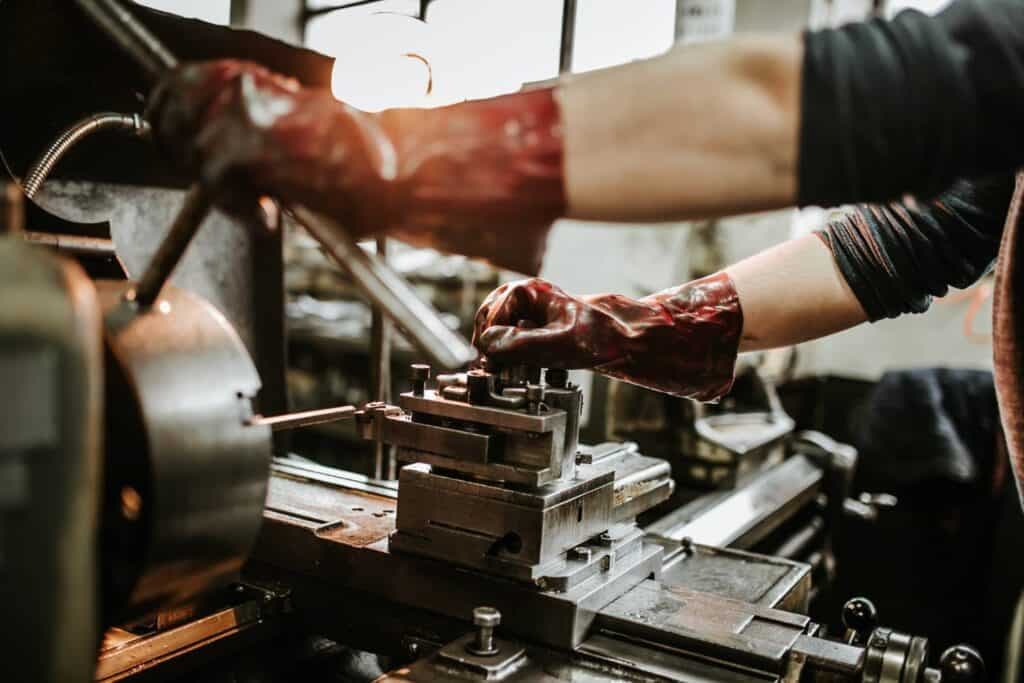Metallurgy has always played a key role in ensuring national security. The production of steel and alloys is not just the foundation of heavy industry but also a crucial element in the chain of creating modern weapons, armored vehicles, aviation, and naval fleets. Steel forms the “skeleton” of defense — from the bodies of combat vehicles to bulletproof vests and protective infrastructure elements.
Particular importance is given to alloys with unique properties — resistance to high temperatures, corrosion, and impacts. For example, titanium-aluminum or nickel alloys are used in the production of fighter jet engines, while steel-based composite materials protect the crews of tanks and APCs. Even a small change in alloy composition can significantly affect a vehicle’s resilience under combat conditions.
Czechia: Metallurgical Tradition and Its Defense Relevance
Czechia has a long-standing metallurgical tradition that has been closely linked to military production since the Austro-Hungarian Empire. Regional enterprises such as Vitkovice Steel and Třinecké železárny remain important players in the supply of specialized steel used in the defense industry.
Interestingly, in recent years, Czech metallurgical capacity has gained new momentum thanks to digitalization and integration into European defense programs. The production of high-strength steels used in armor protection and artillery components requires not only precise technological processes but also strict quality control. This is not a field where compromises are acceptable.
As paradoxical as it may sound, alongside serious industrial and military initiatives, less “rigid” sectors such as digital entertainment are actively developing in Czechia. The emergence of platforms like online casino, offering digital leisure against the backdrop of high-tech production, demonstrates how multifaceted the economy of even a small country can be. This contrast is not a contradiction but a reflection of the modern balance between traditional industry and the virtual sphere.
Materials of the Future: Superalloys and Innovation
Metallurgy does not stand still. Research laboratories around the world, including European defense consortia, are developing new types of alloys — so-called superalloys. They combine lightness, strength, and resistance to extreme loads. These materials are essential, for example, in the construction of hypersonic weapons or next-generation unmanned aerial vehicles.
One of the breakthrough areas is the use of nanostructured steel, which can withstand impacts and loads beyond the capabilities of traditional materials. In light of rising global tensions and the need for rapid responses to threats, these developments are not science fiction but a direct contribution to defense capability.
Innovative technologies also allow for the reduction of weapon weight while maintaining protective properties. This is particularly relevant for mobile air defense systems, landing ships, and airborne forces, where every kilogram matters. Thanks to the adoption of 3D printing from metal powders based on high-strength alloys, the production of complex components — which previously took weeks or months — can now be significantly accelerated.
Metallurgy as a Strategic Asset
Amid global crises, trade conflicts, and the pursuit of energy independence, metallurgy is becoming not only an industrial sector but also a strategic tool of national security. That is why many countries strive to control the supply chains of metals — from ore mining to finished armor plates.
The Czech defense industry is closely integrated into the pan-European structure. However, in the context of potential disruptions in critical material supplies or geopolitical restrictions, the localization of production and diversification of metallurgical capacity become a priority. This means that even minor changes in logistics or geopolitics can impact the pace and scale of arms manufacturing.
Prospects: From Steel to Digital Defense Ecosystems
The future of defense is inextricably linked to the synthesis of materials science and digital technologies. Today, major Czech enterprises are equipping their metallurgical lines with artificial intelligence that monitors the process of melting and hardening steel. This increases precision, reduces waste, and ensures consistent product quality.
In the coming years, we can expect growth in the production of adaptive armor panels capable of changing shape under the influence of temperature or pressure. Such systems, created at the intersection of metallurgy, nanotechnology, and defense engineering, may become the new standard for tomorrow’s army.
Conclusion
Metallurgy is not just an industry — it is the foundation of a country’s defense potential. In an era of high speed, hybrid conflicts, and digital threats, steel and its derivatives continue to play a central role. And while in one part of the country armor for tanks is being forged, in another — players in an online casino relax with virtual slots. This is the reflection of modern society: where security and entertainment exist in parallel, not interfering with but rather emphasizing the importance of balance.

